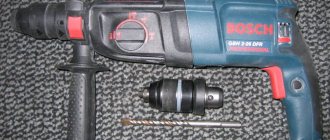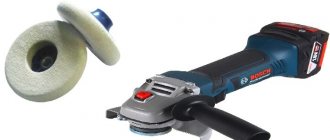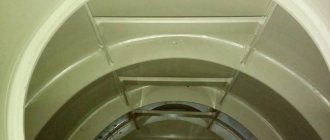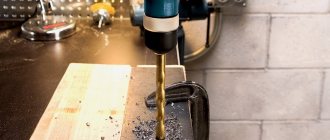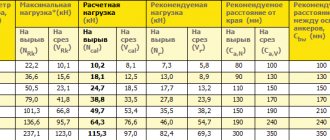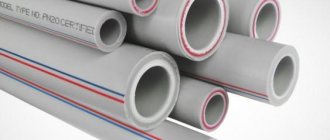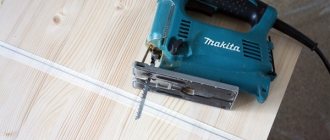This is another advantage, namely mechanical compliance, which is extremely important from a processing point of view.
There is a huge range of cutting tools for lumber, from a simple hacksaw to an electric jigsaw.
But is it possible to cut wood with a grinder?
After all, we are talking about a universal tool for processing solid types of materials, but thanks to the combination of excellent functionality, ergonomics and performance, most craftsmen try to use it even for working with soft-body workpieces in the form of wood. Let's talk about how this use of an angle grinder justifies itself.
Advantages of using an angle grinder for woodworking
This electric device has a powerful motor, which makes it possible to easily cope with different types of rocks that are usually used in production and domestic house construction. Usually we are talking about working with timber, boards and even wood chips. Believe me, even a minimum power of 0.5-0.7 kW is enough to process standard lumber. But here another question immediately arises: “Is it possible to saw wood or logs with a grinder?”
Much will depend on the typical size of the attachment, but for this task, a chainsaw is the best option. The Bulgarian, in addition to its performance, was perfectly able to justify itself in terms of functionality. Modern small-sized models weigh very little, but at the same time they have a large set of adjustment systems, equipment control and safety. The operator can even individually adjust the machine to a certain cutting depth, number of revolutions, as well as the use of soft start and other features.
Disadvantages of processing wood with an angle grinder
But the main argument against using an angle grinder when working with materials such as wood is safety. There are some ergonomic nuances that are associated with the inconvenience of cutting direction, but it is the risk of injury that often stops specialists from such sawing tactics. Why is sawing wood with an angle grinder dangerous to life? Compared to the same circular saw or electric jigsaw, an angle grinder is not equipped with a stopper, or rather a device that will physically stop the cut when passing the critical point.
In other words, as the seating area or center of the cutting blade gets closer to the surface of the workpiece, the likelihood of the tools getting caught and flying out of your hands will begin to increase. Believe me, these things happen unexpectedly, as does the direction of the angle grinder's kickback. The second nuance is mostly related to the nozzle itself. For example, it is strictly forbidden to use disks with soldered segments, because they can begin to collapse during operation. But at the moment, manufacturers have taken care of producing special equipment for servicing soft building materials.
Structure and capabilities of the grinder
The structure of an angle grinder (angle grinder) is quite simple. The electric motor, through an angular gearbox, transmits rotation to a shaft on which replaceable attachments are fixed. The area of use of the grinder is extremely wide. It is used for cutting, stripping, roughening, grinding and sharpening. The type of work performed is determined by the functional purpose of the replacement disks. Each angle grinder attachment has its own purpose.
This tool is used during construction work, in mechanical and repair shops, during rescue operations and in other fields of activity. The grinder is indispensable both in everyday life and at work. We also recommend this video:
Wood discs for grinders
An angle grinder is used to work with hard materials and is not a specialized tool for wood processing. But you can use it for these purposes, although you will have to comply with some conditions. It is strongly not recommended to use standard equipment, because... It is not safe.
The industry produces a number of specialized wood blades recommended for angle grinders:
- Cutting discs have specially shaped teeth and expanders located on the cutting part, which help prevent the tool from jamming.
- Chain discs are intended for modeling, milling and stripping wood. They are a disk made of high-alloy steel, on the outer edge of which a chainsaw chain is installed.
- Flap sanding special attachments are designed for smoothing out uneven surfaces and cleaning. This attachment consists of several layers of sandpaper laid radially on top of each other so that they overlap each other.
- The plane disk is used for rough processing of wood blanks, for example, when constructing a log house. This attachment replaces a carpenter's axe.
- Wood cutters allow you to perform rough milling work.
- End discs are used to level the end surface.
- Sanding disc for wood with replaceable sanding wheels of different grain sizes.
Usage Details
Which disc to use for wood
To cut wood with a grinder, we have already noted that the construction equipment market offers special equipment for angle grinders that can be used to process wooden workpieces. As a rule, we are talking about adaptive discs with expanders in the cutting area, as well as with an unusual tooth shape. This design feature is aimed at reducing the likelihood of a wedge. At the same time, you can find both grinding and cutting wheels for wood.
Another option for an acceptable attachment for such purposes would be to use a chain attachment. But when using it, you will need to take into account a wide cut grip, approximately 0.8-1 cm. Using a chain disk with a grinder, you can cut wood to a maximum depth of 12.5 to 23 cm. These are standard formats for an angle grinder, but the work process will be very different due to the low level of vibration waves and no risk of the instrument flying out of your hands.
Is it possible to cut wood with a grinder with a metal attachment?
Most of these discs (for metal) have small teeth, and without fail everything is supplemented with diamond or even pobedite chips. This makes it possible to work with both natural stone and metal. It is dangerous to use such attachments for wood, but there are disk models whose device is almost ideal for carvers for soft materials.
Now, in order to saw wood with a grinder using a metal disc, be sure to ensure that two conditions are met:
- The circle has a medium and rare tooth (if it is large, there will be an increased risk of a wedge).
- Segments or other inserts on the surface of the nozzle are made of carbide or tungsten.
This design makes it possible to minimize undesirable effects during work, but according to safety regulations, even this is not enough to use an angle grinder in such operations.
Preparing the grinder and the workpiece for cutting
Please note that the angle grinder must be thoroughly inspected and tested for proper functionality. It is imperative to evaluate the reliability of the connection, electrical connections, protection system activation and structural mechanisms. It’s also worth checking the degree of rigidity of the nozzle’s grip, and if you plan to saw wood with an angle grinder indoors, it wouldn’t hurt to prepare a construction vacuum cleaner (or chip extractor) in advance.
Modern models of angle grinders have a special connection for removing dust - connecting a vacuum cleaner to it will make it possible to avoid contamination of the workplace with wood shavings. The workpiece itself must be well dried, cleaned of foreign inclusions and dirt.
The working process
You should start cutting with a soft start if your angle grinder has such a function. It is important that operation at low speeds is ensured, and if necessary, a little later you can begin to increase the torque along the way. Much in the tactics of changing cutting parameters depends on the degree of hardness of the workpiece, as well as its dimensions.
How to cut wood with a grinder if you need to make a bevel cut? Unfortunately, a curved cut is not allowed at all, and the workpiece should be cut exclusively at a right angle, and any tilting will be excluded, since misalignment as such can be dangerous. Complex non-standard operations, including even shaped cutting, are performed as part of secondary processing with another tool, not an angle grinder. After the work is completed, you should wait until the disk stops, turn off the device and remove the plug from the socket. Next, the tool can be disassembled and cleaned of wood shavings and dust.
What you need to remember when picking up an angle grinder
Unfortunately, many people make the mistake of removing the protective cover. This cannot be done, even when you want to examine the section of the cut. A disk failure can happen at any time; fragments can fly into the worker and those around him. At the same time, the speed is enormous, and it is impossible to figure it out in time.
So, about the important points:
- check the secure fixation of the protective cover;
- examine the integrity of the disks, removing any chips or cracks;
- hold the tool in such a way that the casing is located on the worker’s side;
- check the device in different speed modes at idle (the angle grinder should not vibrate);
- do not be distracted and make sure that the cord does not end up under the disk;
- inspect the wood for knots;
- take breaks periodically, and it’s a good idea to inspect the disc;
- hold the unit firmly with both hands;
- If the device jams, immediately turn it off;
- during work, choose a stable position;
- Move only with the grinder turned off.
Why can you cut with a hand-held circular saw?
The key word here is support. If you cut wood with a circular hand saw, then you will rest the tool on the workpiece itself, and simply push everything forward along the intended line. The tool disc will not move to the left or right because the support prevents the disc from bevelling. In the case, for example, with a circular stationary machine, everything will be even simpler, because the disk is fed along the table and again, resting it on the surface, we do not allow the workpiece to tilt to the left or to the right.
In the case of an angle grinder, the disc will have no support other than an unsteady hand. That is, if you cut material with a circular saw, then you push the tool, resting it with your shoulders against the material, and if you work with an angle grinder, then you simply hold the tool “in weight” with the strength of your hands (which in an emergency situation may simply not be enough). In addition, an angle grinder rotates faster than a circular grinder; according to average data, an angle grinder has a rotation speed of 80 meters per second, while a circular grinder has a rotation speed of 60 meters per second.
Difficulties when working with an angle grinder
We mentioned the discrepancy between the speed of the grinder and the circular saw, but users who have an angle grinder with speed control can say that this factor was taken into account, and any saw blade for wood will be suitable for their tool.
Of course, by setting the number of revolutions of the grinder's output shaft corresponding to that indicated on the saw blade, they significantly reduce the risk of injury during operation, but do not completely eliminate it. This is primarily due to the material itself, or rather its structure and heterogeneity.
Even in different places of one trunk, a tree has different hardness, not to mention inclusions of viscous resin, the possible presence of metal found in the thickness of the wood: from pellets and bullets that hit the tree during a hunt, to wires that had grown into it, which were used to tie branches. Don't forget about knots, which are present in almost all types of wood.
When encountering the listed obstacles, the saw blade sharply slows down and, by inertia, the grinder is simply torn out of the hands, and when passing a hard section, it rushes forward with redoubled force.
When encountering metal, there is a high probability of chipping a carbide tooth, which can be captured next and thrown out at the speed of a bullet. It’s good if it’s within the range of the protective casing.
A person who decides to cut a tree is exposed to even greater danger, because in this case the grinder must be placed on its side, which changes the usual and comfortable grip, which means the grip weakens.
We categorically do not recommend cutting wood with an angle grinder that does not have speed control, or with saw blades for circular saws. But there are special discs for angle grinders designed for working with wood.
Recommendations for the progress of work
There are a number of small technical and operational nuances that should definitely be taken into account during the woodworking process:
Most people, in an attempt to make work more comfortable, get rid of the protective casing, BUT this is strictly forbidden, because the casing is the only barrier in front of the disk and the operator, and its destruction can lead to injury.- A special device helps to increase the reliability of the physical holding of the tool - a load-bearing base, which will turn a hand-held device into a real machine.
- In order to ensure a more tenacious grip, it is recommended to cut wood with a grinder only while wearing construction gloves that are equipped with rubber pads.
- If the model of angle grinder you are using has a locking function, it is better not to use it. Difficult situations require immediate shutdown of the device in order to minimize damage, but the enabled lock prevents this from happening.
Now that you know everything, all that remains is to summarize.
Working with artificial and natural stones
A number of categories of stones, including marble, concrete, granite and others, have high strength. Not even the most powerful grinder can cope with these in all cases. To cut stones, you should use special cutting devices. We are talking about cut-off options coated with diamonds, which were already mentioned earlier. It is based on a plate made of high-strength steel, on the outer part of which certain segments are located. The jagged tips of the segments are covered with high-strength chips made of diamonds. During operation, such wheels encounter intense heat, which is why there are special slots for cooling, which are called perforations. During torsion, cold air passes through the slots into the cutting area, which cools the material being worked with and the disc. Using diamond options, it is easy to cut the strongest finishing stones that have a natural base:
- granite;
- flagstone;
- marble.
But artificial solutions can also be cut well using this method.
As with concrete, its age will be very important, since the older it is, the stronger it is usually. It also matters what filler was used to create the material.
In general, only a powerful, truly professional angle grinder, which has diamond-based abrasive discs and the ability to change speeds, can handle concrete specifically. Let's say that nowadays there are only two methods for cutting stones of natural and artificial origin:
- dry;
- wet.
In the first case, a large amount of dust is formed. In the second case there will be a lot of dirt. Preference should be given to one method or another depending on the volume of work. If we are talking about some one-time work, then you can easily get by with the dry option. If there is significantly more work, then you should resort to the second option. In addition, the use of water eliminates the formation of dust, improves cutting conditions and reduces wear on the diamond blade.
Grinding an angle grinder – How to properly grind with a grinder: wood, concrete, metal
What to choose - a grinder or an angle grinder
When buying a device, you must first decide what it will be used for. Working with wood has its own subtleties - incorrect or insufficiently careful processing with the wrong tool can ruin the entire appearance of the product.
An ordinary grinder is inexpensive, simple and economical to maintain and repair. It can be used to quickly sand wood using a flap disc - sandpaper attached to a hard round base. There are discs of different abrasiveness, which should be selected based on the intended purpose. However, the quality of such processing will be low: the surface will be smooth, but not entirely even. The reason for this is
This method is good if you need to sand, for example, a picket fence, boards for a subfloor or ceiling. But it is not suitable where it is important to obtain a perfectly flat surface, as well as for processing corners and other reliefs.
READ Divorce on Band Saws in Winter
For these purposes, it is better to use professional sanding machines - belt, or “tanks”, during rough processing, when it is necessary to remove a thick layer of wood, vibration - at the intermediate stage and eccentric - at the final stage, when you need to finally sand the product.
The use of several types of sanders is preferable because this is required by the technology of sanding wooden surfaces. You should start sanding using coarse-grained paper with an abrasiveness rating of 60, then 80 and gradually increasing the grit to 150-180.
When processing wood after sanding with a tool, it is recommended to finish it manually, since otherwise, if you cover it with stain or paint, marks from the tool may be visible. The wood should be sanded strictly along the grain with quick, light movements. At the final stage, when fine-grained sandpaper is used, there is practically no pressure.
Which attachments are suitable for working with wood?
And yet, manufacturers produce several options for components for grinders that can work with wood. These include:
- chain disk;
- saw wheel;
- tungsten carbide;
- grinding attachment.
All of them will help solve minor problems with cutting wood. However, experts advise working with a suitable device for this.
Milling cutter or chain disk
This option is quite expensive, but has a special mechanism in its structure that will prevent the tool from being knocked out of your hands. It can be turned when biting wood. Its diameter is at least 23 cm.
Saw blade with few teeth
Aerated concrete blocks are usually sawed in this circle. Also suitable for wood. Manufacturers apply markings on a special sticker. Using it you can find out the maximum number of revolutions and adjust the operation of the device.
Tungsten carbide
A durable universal disc that copes with any materials and does not knock out even at high speeds. The price often bites.
Sanding attachments
The machine is designed for grinding, so there will be no problems with the operation. Simply install the holder attachment and abrasive wheel. The grain size is chosen according to the size.
Basic safety rules
Before cutting wood , you need to familiarize yourself with the safety rules. The main ones of these rules are the following:
- Be sure to use personal protective equipment (safety plastic goggles, fabric gloves) and work in overalls.
- It is strictly forbidden to use discs that have defects.
- It is recommended to hold the grinder firmly with 2 hands.
- Always ensure that the electrical cord is not near the rotating disc.
- Place the grinder only after the cutting element has completely stopped.
- Do not remove the protective cover.
- Do not work while intoxicated.
You cannot use equipment that is not intended for working with angle grinders. You should not use cutting equipment for a circular saw for the following objective reasons:
- An angle grinder has a higher rotation speed than a circular saw. The disc is designed for lower speeds, so at high speed it can crack and fly apart. Flying fragments can cause harm to health.
- The wood has a more viscous texture and inclusions in the form of knots, which is why the teeth enter the material unevenly. If the blade becomes jammed, the tool may be pulled out of your hands, resulting in serious injury.
- Due to uneven loads, equipment overheats and may fail.
The principle of operation of the grinder
To understand whether you can cut wood with a grinder or not, first let’s figure out how this tool works. An angle grinder is a power tool that is used for processing, grinding and cutting stone, granite, various types of metal, cement surfaces and others. Consists of several parts:
- Body (usually cylindrical).
- Protective cover to ensure the safety of the master during work.
- Engine.
- Gearbox housing.
- Safety coupling.
- Disc clamp nuts.
- On and off buttons for replacing the disk.
Different models of angle grinders may have differences depending on the manufacturer and model, which in most cases are small in size. Thanks to the variety of attachments, the tool is considered universal.
Secrets of safe work with angle grinders
In order to reduce the risk of injury, various protective elements are used: work suits made of thick fabric, a plexiglass mask, gloves. However, confidence in safety at work can only be achieved by following the basic rules, which will now be discussed.
Rule #1: Adjustable Handle Position
The handle should be on top. Many craftsmen screw it in from the side, in a horizontal position, claiming that this way the cutting area is better visible, and therefore higher safety, but this is a dangerous misconception. Only with a vertical position of the handle on top is it possible to ensure a strong grip and protect yourself and others from the situation when the grinder flies out of your hands when you “bite” the disc.
The handle should be located on top - this will ensure a secure grip.
Many will ask why the lateral position of the handle is provided in this case. It is used during grinding work, when there is no danger of the disc being “bitten” by metal parts.
Rule #2: Direction of disk rotation
Inexperienced craftsmen often believe that the blade should rotate, making the cut "from itself" so that the sparks fly away from the operator. However, not a single specialist who has experience working with angle grinders would agree with this statement. The fact is that a special casing protects from flying sparks, so the master is not afraid of them. Here the question arises differently: how will the grinder behave if the disc is “bitten” by metal?
When rotating towards itself, the jammed disk that suddenly stops causes the angle grinder to be pulled out of the operator’s hands towards the ground, i.e. away from the master. If this happens during reverse rotation, “from itself,” the angle grinder may fly into the head of the person working with it, which at best will be very unpleasant, and at worst is fraught not only with a hospital bed, but also with more dire consequences.
The disk should rotate towards itself. The protective cover will prevent sparks from flying into the eyes, and use will be safer
Rule No. 3: positioning the metal when cutting it
Many novice craftsmen make a serious mistake by fixing the pipe or channel being cut on both sides and starting cutting between the fasteners. With this arrangement, there is a high probability of the disc jamming at the end of the cut. For example, we can recall an ordinary board that everyone sawed at least once in their life. In the end, the hacksaw gets jammed and you have to look for a position that will lead to the opposite effect. It's the same story with pipes. One end should be suspended. In this case, decompression will occur, not jamming.
The edge of the part should be suspended - this will prevent the disk from jamming
Rule No. 4: Using the side of the disc is prohibited.
Many “craftsmen” claim that sharpening drills with the side surface of a cutting wheel is completely safe. Sometimes such delusion can cost lives. After all, the circle itself consists of an abrasive, which is reinforced on both sides with a metal or fiberglass mesh. If the reinforcing layer is damaged, the abrasive may not withstand the rotation speed and break into pieces. That is why only the end surface is considered working.
Also, do not use a metal cutting wheel to cut wood. Despite the fact that this material is softer, when the circle rotates, its temperature rises sharply, which first leads to the appearance of smoke, and as work continues, to the melting of the adhesive base of the disc. The result may be its destruction, which, again, will lead to injury.
Rule No. 5: nuances of working with an angle grinder
When installing a disc on an angle grinder, many people try to thoroughly tighten the nut using the wrench included in the kit. This is a big mistake. This key is intended for unscrewing only. The installed disk just needs to be tightened manually. The grinder is designed so that the nut is tightened during operation. Therefore, using a wrench during installation will lead to difficulties, and sometimes even to the impossibility of unscrewing the nut later.
It is worth paying attention to the launch of angle grinders. The button should only be pressed if there is nothing obstructing the disk
This means that under no circumstances should the wheel be immersed in a started cut before it unwinds and enters the rotation cycle.
The nut must be tightened by hand - no wrench is used.
Related article:
The eternal question: what to do?
And really, what to do when it is necessary to polish not just one wooden handle of a file or hammer, but wooden pickets for a fence along the entire perimeter of the site, and this can be 100 or more meters of the perimeter alone, without taking into account the height of the fence. Just because of one manipulation, don’t buy a belt sanding machine, which you don’t know when it will come in handy, if at all.
In this case, we remember the possibility of using existing means, in particular grinders. As practice shows, a grinder is perfect for sanding wood; it’s not for nothing that it’s called an angle grinder.
In total, thanks to this tool, you can carry out the following manipulations with wood:
All these manipulations are subject to careful analysis.
Grinding: what and how
Sanding wood with a grinder is a process that has several possible scenarios. Therefore, in this section an attempt is made to combine various options; this is a universal instruction for grinding; all you have to do is choose what you need.
The grinder will cope with this task perfectly. You will need a peeling attachment, which is a bowl with twisted wires around the perimeter.
Note! There are several types of such attachments; if the wires form thick bundles - rollers, then they are designed to work with metal or concrete bases and, when used on wood, can significantly damage the outer fibers. It is clear that their use is undesirable.
- Step 2 – rough sanding. The purpose of this step is to remove small fragments from the surface of the wood in the form of protruding fibers, remnants of old paint, and lower layers of bark. For this purpose, special grinding and polishing wheels are provided for grinders.
But it is better to take universal bases, to which sanding wheels of varying degrees of abrasive grain size are attached with internal bases - Velcro. These circles at the maximum speed of the grinder are able to quickly eliminate all those defects that may be on the tree.
This step is universal for all types of preparatory work for painting: sanding a wooden floor with a grinder, sanding wooden pickets and terrace partitions, everything is done according to a single template.
- Step 3 – fine sanding. This step is more suitable for wooden products that carry both an aesthetic and functional load. When using the attachments that have already been mentioned above, it is enough to install a circle from the zero, and there you have it, fine grinding.
A little more practice! How to sand wood with a grinder has already been described. Do not attempt to use metal cutting wheels to sand wood. Despite the fact that the wheel itself is an abrasive, there is a high probability of its uncontrolled destruction with flying fragments and injury to the worker.
This is the result of incorrect application.
Grinding metal surfaces
The metal is polished to different requirements. Most often, the metal is ground for painting or for further polishing. The main tool is a support cup with replaceable sanding pads. The selection of sandpaper depends on the degree of processing and the condition of the metal.
When sanding, you only need to work with part of the disc. There should be no untreated areas left on the surface.
It is advisable to coat the treated surfaces of ordinary steel with a primer. Moisture in the air can very quickly coat the metal and cause rust.
What and how to sand wood
When carrying out various types of repairs, at the time of production of furniture or wooden objects, it is often necessary to sand the wood. There are many methods that can be used to sand wood . They have their advantages and disadvantages, some foresee the introduction of hand tools.
You can sand wood:
- When using an angle grinder, there is an option to bring the condition of the tree to the desired state. The grinder has an abrasive material represented by a circle;
- an ordinary drill is also used if you set a goal to bring the surface of the wood to a suitable condition;
- a surface grinder can be the main design if your goal is to sand wood ;
- Belt sanders are used to sand wood using an abrasive material;
- Grinding is also carried out using hand tools.
READ How to Clean the Carburetor of a Husqvarna Chainsaw
Despite the fact that the natural material in question has a fairly high structural hardness, many grinding methods are used, some of which we will discuss in detail.
Polishing – as a separate type
Polishing and grinding are twin sisters, with the only difference being that grinding is carried out with abrasive materials at high speeds, while polishing requires cloth wheels and low engine speeds.
Advice! At high speeds, the fabric heats up quite strongly when rubbing against the surface, the cost of such an application is thermal destruction of the varnish layer, which is clearly not desirable.
The main thing is to choose the right nozzle and speed.
And in everything else there is complete similarity. Both processes are done with your own hands, using a grinder and a universal base.
Preparing the tool and workpiece for sawing
The grinder must be carefully inspected and tested to ensure the functionality of the functions. The reliability of connections, electrical connections, and the operation of protective systems and structural mechanisms should be assessed. The grip rigidity of the nozzle is checked separately. If you plan to cut wood indoors with a grinder, it would be a good idea to prepare a construction vacuum cleaner. Modern models of angle grinders have a special connection for dust removal - connecting a vacuum cleaner to it will help avoid contamination of the workplace with small chips. The workpiece itself must be dried and cleaned of foreign matter and dirt.
What can you do with a grinder?
An angle grinder, commonly known as an angle grinder, is capable of performing many operations.
The design of the angle grinder makes it quite a powerful tool: the basis is an electric motor from 600 to 2700 W with a gearbox, shaft and replaceable attachments
The more powerful the engine, the higher the professional class of the device. For ease of use, high-quality models are equipped with handles that allow you to securely hold the tool during operation. Household models operate from a regular network. A professional tool will require three-phase power supply of 380 V.
What operations does the grinder perform:
- cutting;
- polishing;
- grinding;
- sharpening
An angle grinder can work with different materials: concrete, metal, wood, brick and ceramics, stone, plastics.
The versatility of this instrument is due to the use of a variety of attachments, each of which is designed for its own type of operation.
For ease of use, the grinder can be permanently mounted using special fasteners on the work surface. Some models are equipped with adjustable disk rotation speed.
Why is it difficult to process wood with an angle grinder?
First of all, it should be noted that the high speed of rotation of the disk distinguishes an angle grinder from a circular saw. And even the presence of a compensating ring that comes with the disc does not completely solve the problem. But if your angle grinder has a speed adjustment, then this partially makes the task easier.
You can adjust the tool so that its speed matches the speed of the circular saw, this will also reduce the risk of injury to the process
But the main difficulty lies not in this, but in the structure of the wood itself, which is often heterogeneous and knotty. In addition to multidirectional fibers, the wood contains resin, and there may be pellets or ingrown wires that you will not immediately notice. In general, wood is an unpredictable material. While working, you may encounter an unexpected obstacle and, as a result, a jerk that can knock the tool out of your hands and send it along a dangerous vector.
If the disc meets a piece of metal, a tooth may fly out of it, which, like a bullet, can also rush in an unpredictable direction. You'll be lucky if it encounters a protective casing on its way
If you plan to cut a tree on your property with a grinder, you will have to keep it in a horizontal position. This will make your grip uncomfortable and increase the risk of injury.
Important! It is strictly not recommended to cut wood with a tool that does not have speed control and attachments that are not intended for this purpose.
The working process
You should start cutting with a soft start, if there is such a function. It is important to ensure operation at low speeds, if necessary, increasing the torque along the way. Much in the tactics of changing cutting parameters will depend on the hardness of the workpiece itself and its size. How to cut wood with a grinder if you need a bevel cut? Unfortunately, a crooked cut is not allowed at all. The workpiece is cut only at right angles, and any tilting is excluded, since misalignment as such can be dangerous. Complex operations of figured and generally non-standard cutting are performed as part of post-processing with a different tool. After completing the work, wait until the disk stops, turn off the device and remove the plug from the socket. Next, the tool is disassembled and cleaned of wood shavings and dust.
